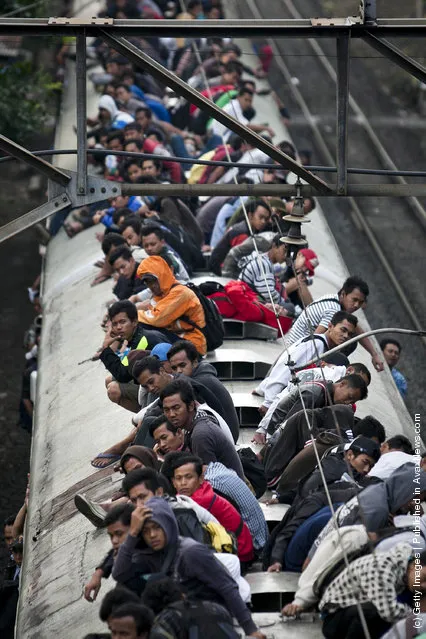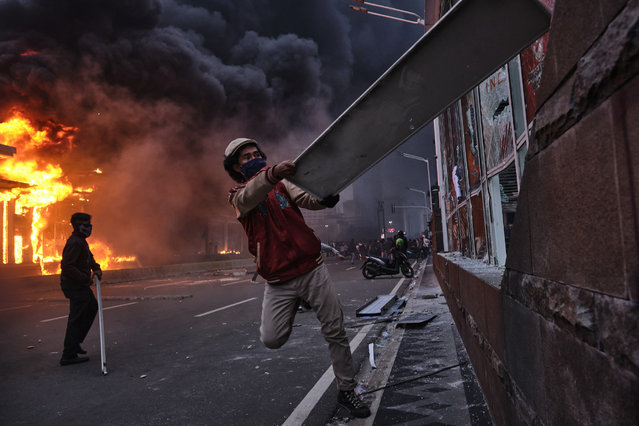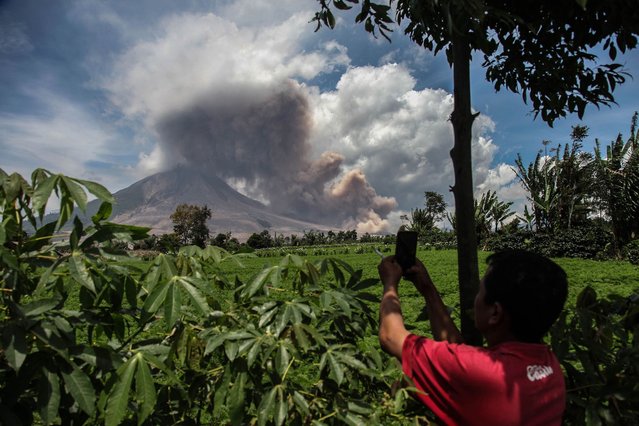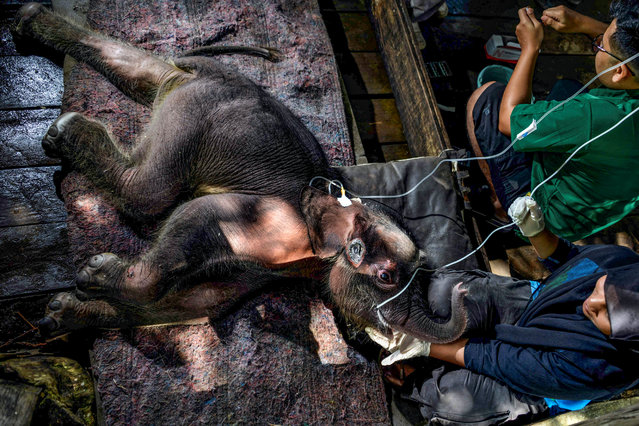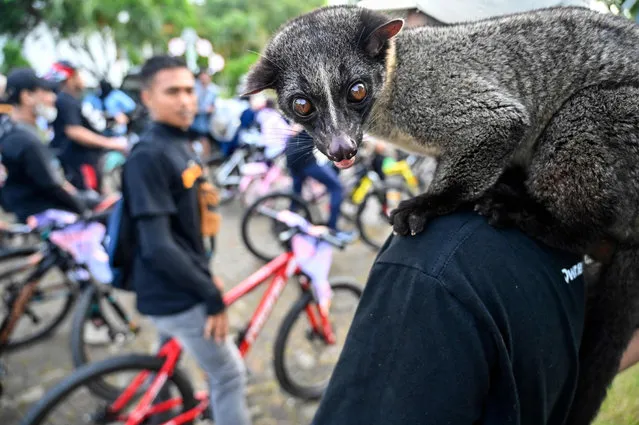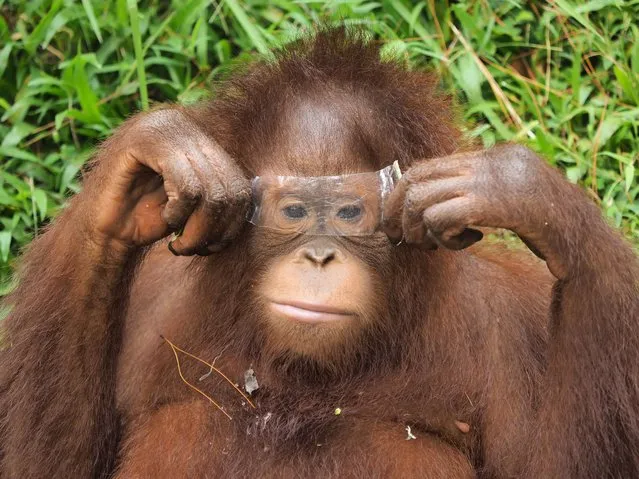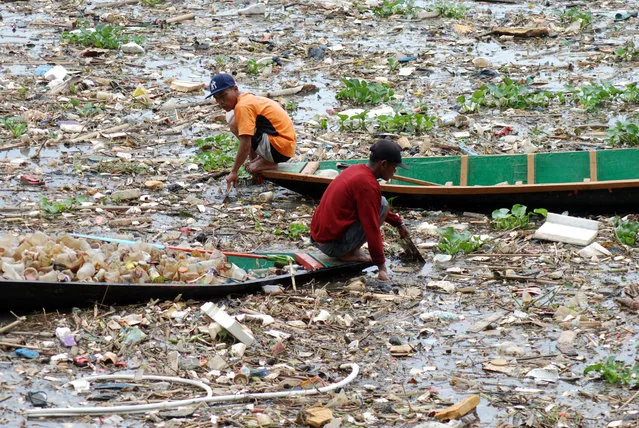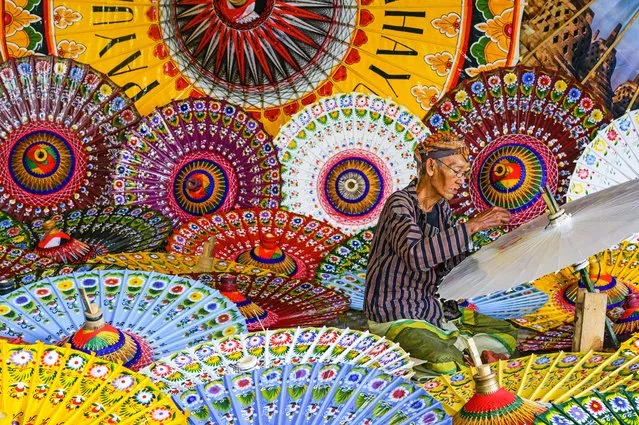
A worker is immersed in a kaleidoscope of colour while they paint traditional umbrellas in Juwiring, Klaten, Central Java, Indonesia in December 2023. The workers who spend around 8 hours a day, depending on order quantities and customer deadlines are paid around Ј200 a month. They will paint a batch over the period of two to three days until each layer of paint is dry. Extras of the traditional umbrella will be made as many tourists come to buy them. (Photo by Lia Indriani/Solent News & Photo Agency)
